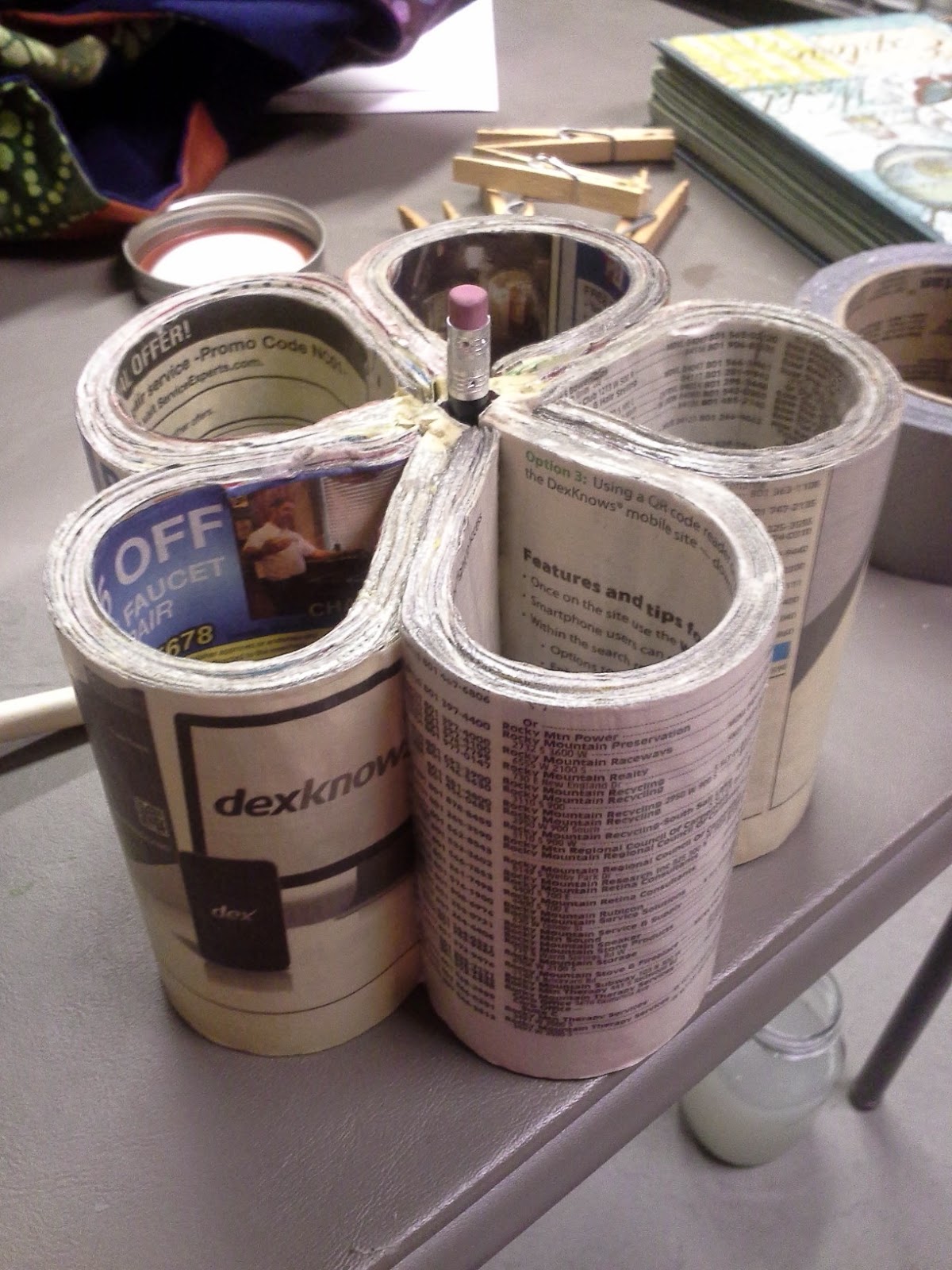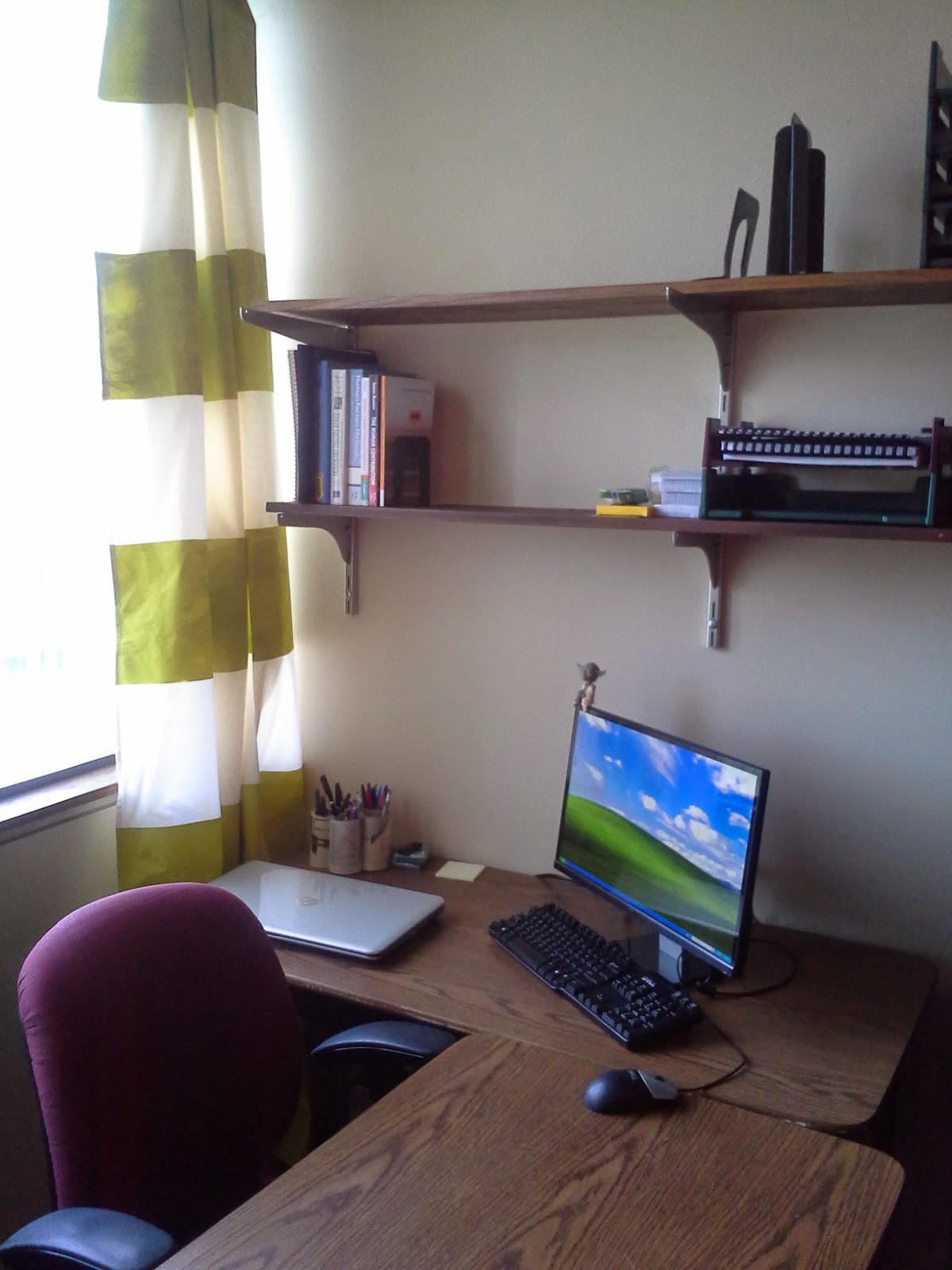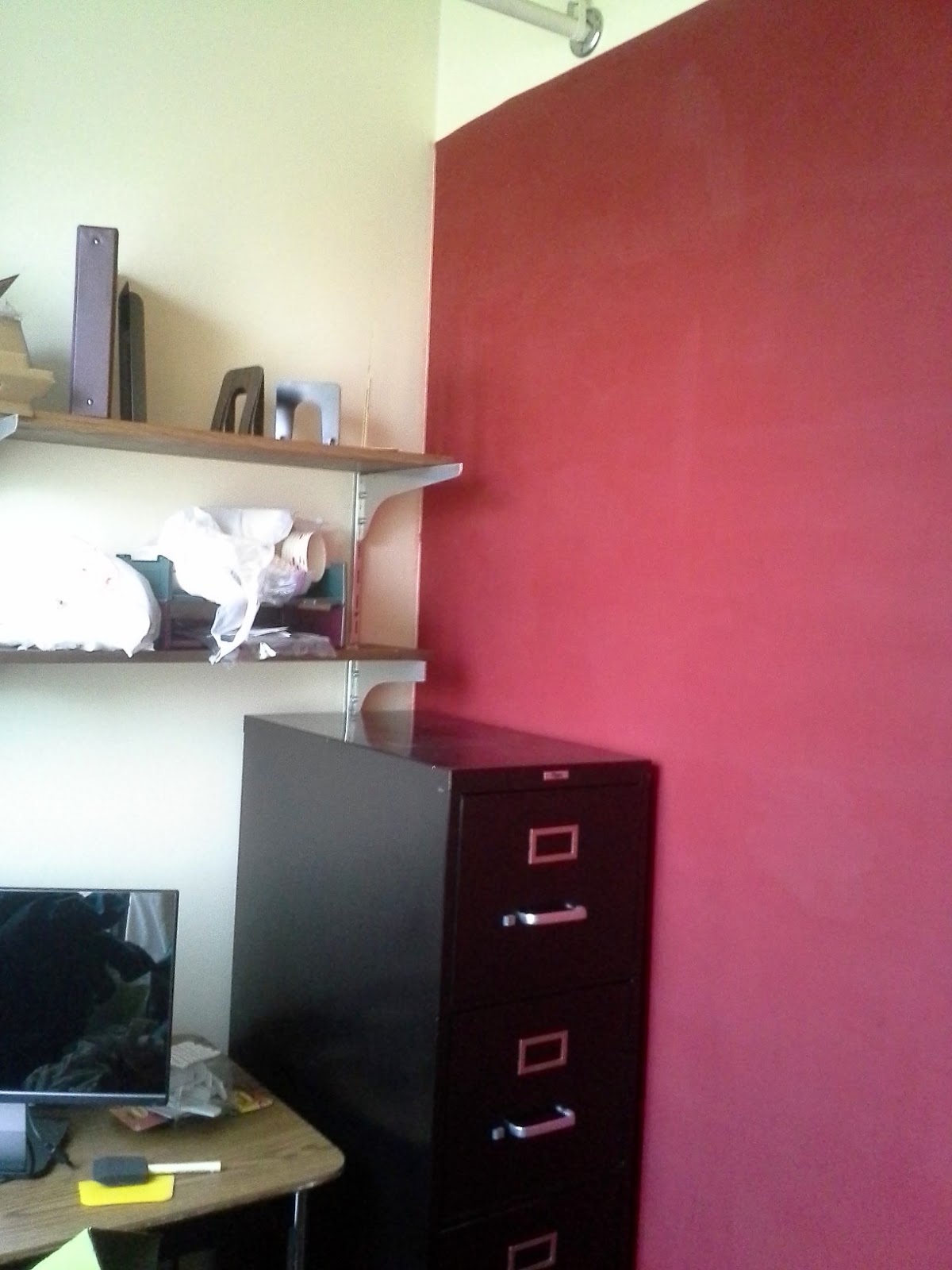I looked up several tutorials about making a wig. Quite a few blogs have instructions for making a wig by cutting the legs off of a pair of tights.
Do NOT use this method.
At first, it looks great. I hand stitched a bunch of yarn in rows onto the edge of the tights. I put the tights on a wig stand to give it some shape, did some fancy braiding, made a nice straight part... and then I took it off the wig stand. Tights don't really have much shape. As soon as the styrofoam head was gone, the wig started to collapse. So I hurried and put it on my own head, thinking that if I stuck a head back in it would go back to being smooth and round. It didn't. The tights stretched out, and all the yarn slid down the sides of my head until it looked like I had shaved the top of my head and put on a very thick sweatband. Not attractive. I tried to put in on my sister and sort of push the hair where I wanted it, but that didn't help at all. Also, have you ever tried to put a pair of tights on your head? Impossible. Getting a pair of tights onto a small toddler would be even worse. (Another note about the tights method: tying a knot in the top of a pair of tights looks ridiculous. Sort of like a melted pom pom.)
So, when making a wig, do NOT use tights as the base.
Got it?
Good.
Unfortunately, (or fortunately, depending how you look at it), I only got one picture of the disaster wig:
This was after the wig fell apart and I undid the braid.
So, the more effective method is to crochet a hat, using a smaller hook size than you usually would, resulting in a very tight stitch so that the hat stays hat-shaped even when there isn't a head inside. There are many patterns for crochet hats online- just type "crochet beanie patterns" into google and choose one, preferably one that uses sc instead of dc.
After you have a hat that fits fairly snugly, you need some hair. I used two skeins of Loops and Threads Impeccable, along with some lighter cream colored leftovers I had from another project- the two tones made an awesome highlight effect.
I measured my little sister's height- from the ankles, up the back, and all the way over her head to her eyebrows. I then DOUBLED this length. This is so you can fold each strand in half and tie it to the hat with a crochet hook.
When you have a nice strand length, find a big open area of floor and grab someone who can throw accurately. Hold the strands of yarn down with one hand, and toss the ball of yarn back and forth with the other hand until you have a pile of yarn all one length- hopefully they are all pretty close to the length you measured (it is okay if they are slightly too long. You can even up the ends after you are done braiding). Grab each end of the pile and cut through all the loops.
If you are careful about stacking and cutting the yarn, hopefully it won't get tangled. Well, some of it WILL get tangled. It is pretty much unavoidable. The above picture may or may not have been taking after several hours of untangling. I blame it on the tights that didn't work.
Now you have to attach all the hair to the hat. Choose a straight column of stitches for the part. Stick a crochet hook through one half of the stitch, then through a few strands of yarn. Pull the ends through the loop to make a nice knot. Do the same on the other half of the stitch to make a straight part line. You might want to add a few rows on each side- you need a lot of yarn to make a thick enough layer to cover the hat.
Continue the part line up almost to the center of the hat.
I put a few stitches around in sort of a semi circle so that the back would be covered. In this picture you can also see that I added an extra layer next to the part.
Then I put the remaining strands along the front edge of the hat on each side of the part.
Flip the hat over, smooth the strands out, and pull everything into a ponytail. I tied a piece of yarn around all the strands, and covered it with a piece of ribbon later. A wig stand is very helpful.
To keep the strands from shifting around, I tacked the strands down with some additional strands of yarn. I threaded a yarn needle and then ran a piece of yarn through the center of about an inch of the top layer of hair. Then I stuck the needle into the hat. Do this around the entire wig- I did three rows. This keeps the hair smooth, but because the stitches are running through the strands it is not very noticeable.
I would take it off the stand and try it on before continuing sometime during the stitching, just in case the yarn starts sliding around or there are any spots that need some extra layers.
After that comes the fun part- braiding and decorating. I got some flowers from Michaels, pulled them off the stems, then hot glued them to the braid. Flowers can cover up any stitches that might be showing.
The wig looks great. We do have to help my sister get it on and off, but I think that it will work just fine on Halloween. It will definitely keep her ears warm!
















































